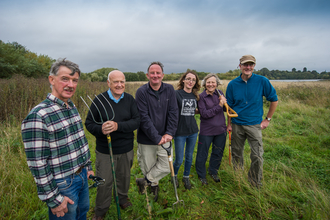
©Steve Chilton
Mouse-ear hawkweed
Looking a bit like a ragged version of a dandelion, mouse-ear hawkweed has lemon-yellow flower heads that are tinged with red at their outer edges. It likes grassy places with short turf and chalky soils.
Scientific name
Pilosella officinarumWhen to see
May to OctoberSpecies information
Category
Statistics
Height: up to 25cmConservation status
Common.


